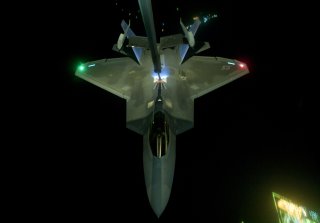Beyond the F-22 or F-35: Meet Japan's F-3 6th Generation Stealth Fighter
Lots of plans, but will it ever fly. Here's all we know so far.
Through April and March 2020, the choice of who Japan would partner with for their “F-3” next generation fighter jet has been reported on constantly, with seemingly contradictory headlines on who the partner would be. This may give the impression that Japan is waffling on their choice of partners in the project. However a deeper reading of the articles shows that Japan’s policy has been rather consistent, and recent developments are a simple narrowing down of options.
To get an idea of how much the project has changed, it’s worth looking at past reporting on the topic. In August 2018, The Diplomat reported that Japan was considering partnering with the UK. 2019 brought the news that the fighter would have a lot of local development per requirements. In early March 2020, Nikkei Asian Review confirmed that the UK was out in favor of working with the United States. But in early April 2020, The Diplomat reported that Japan had rejected the Lockheed Martin plan for Next-Generation Fighter Aircraft in late March 2020, which could suggest that the United States was out again.
This announcement led Military Watch Magazine to publish a piece titled “Japan Says No to American and British Designs: Will Develop Sixth Generation Fighter On its Own,” suggesting that Japan was striking it out totally alone, perhaps partially due to pressure from China. But then on 18 April 2020, Sankei News reported that the Japanese government wanted to establish a working group of American and Japanese companies to work on the next generation stealth fighter, confirming that the United States was in.
But Japan didn’t flip flop. The rejection of the Lockheed Martin plan was the rejection of a proposed fighter that was a hybrid of the F-35 and F-22, not a rejection of U.S. involvement. As Japan has stated their preference for the next-generation fighter to be largely locally developed, this should not come as a surprise. But at the same time, the 2018 document, the Mid-term Defense Program (MTDP), which laid out which planes the F-3 is set to replace said that foreign cooperation is desirable as long as the program is “Japan-led.” So what happened in April and March 2020 is that Japan confirmed that it would want to partner with American companies on a 6th generation fighter, but it didn’t want existing designs that were pitched to it.
This affirms the position of the United States as the aerospace technology leader in the Western-aligned world. According to Overt Defense, the UK was rejected from the fighter program out of fears that a UK-lead fighter project may not have many partners, slowing development and increasing cost. There were also fears about integration with American weapons, which Japan still has large stockpiles of.
Implicitly, Japan may also doubt the ability of a British fighter to be truly multirole, given the slow pace at which British weapons have been integrated onto the Royal Air Force’s Eurofighter Typhoons. Regardless, a partnership with American companies is a significant step forward for Japan’s F-3 fighter program, which will be a crucial piece of maintaining Japan’s security in the near future.
Charlie Gao studied political and computer science at Grinnell College and is a frequent commentator on defense and national-security issues.

